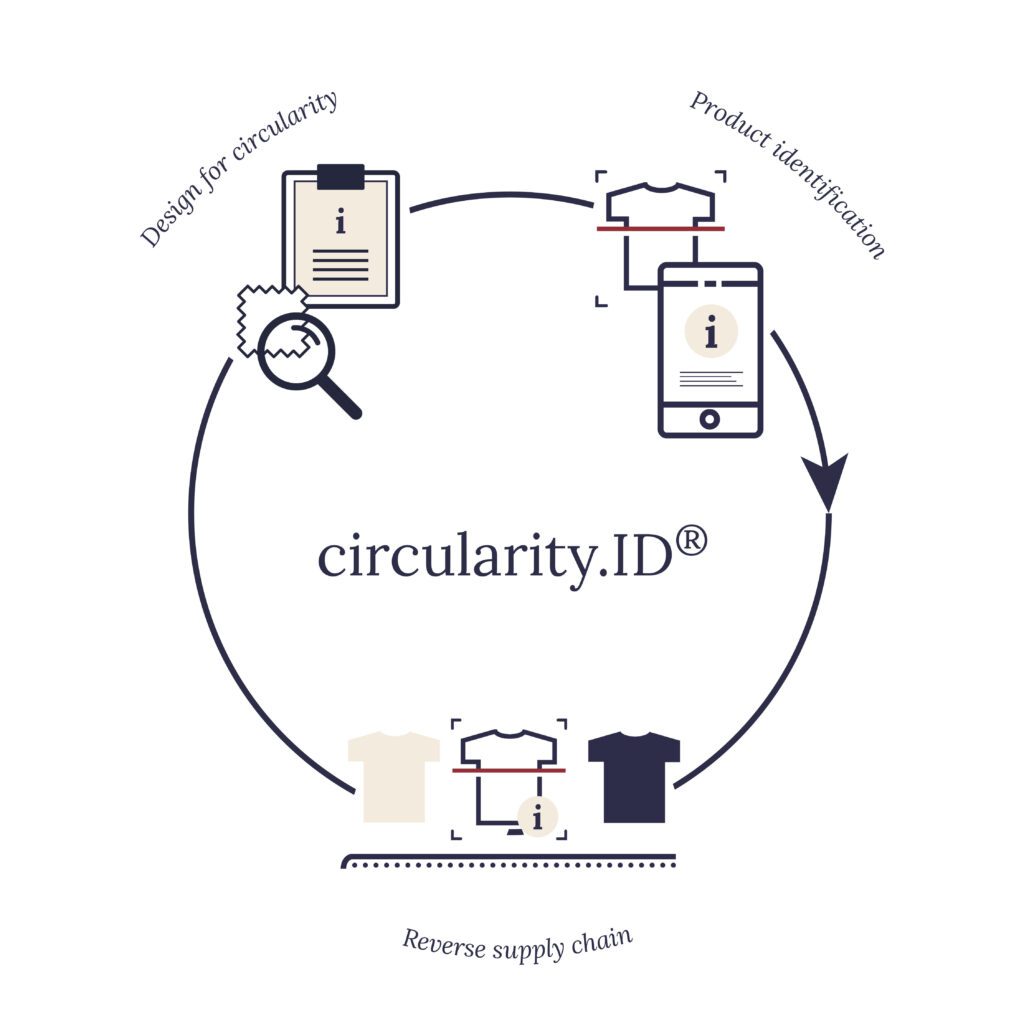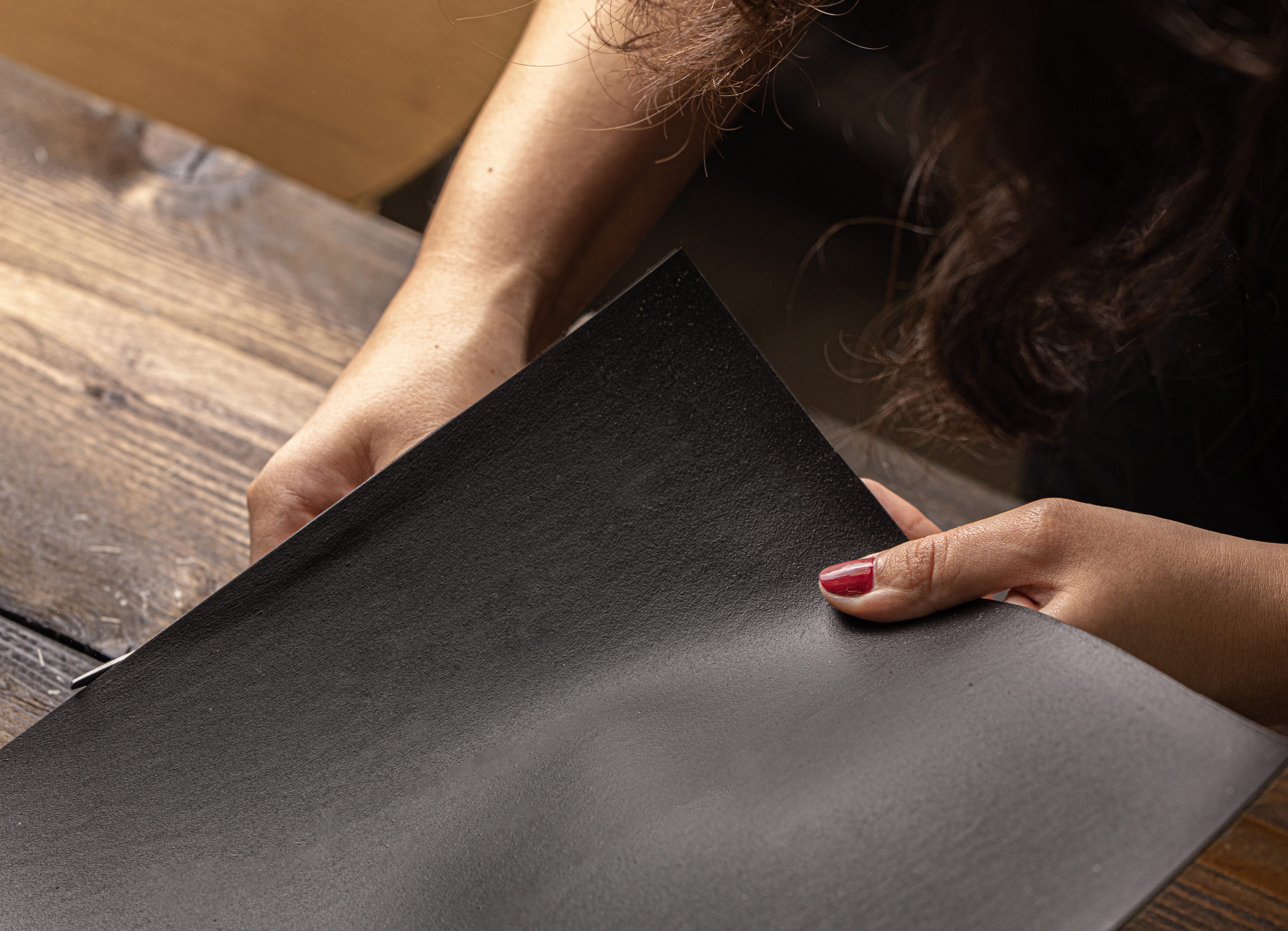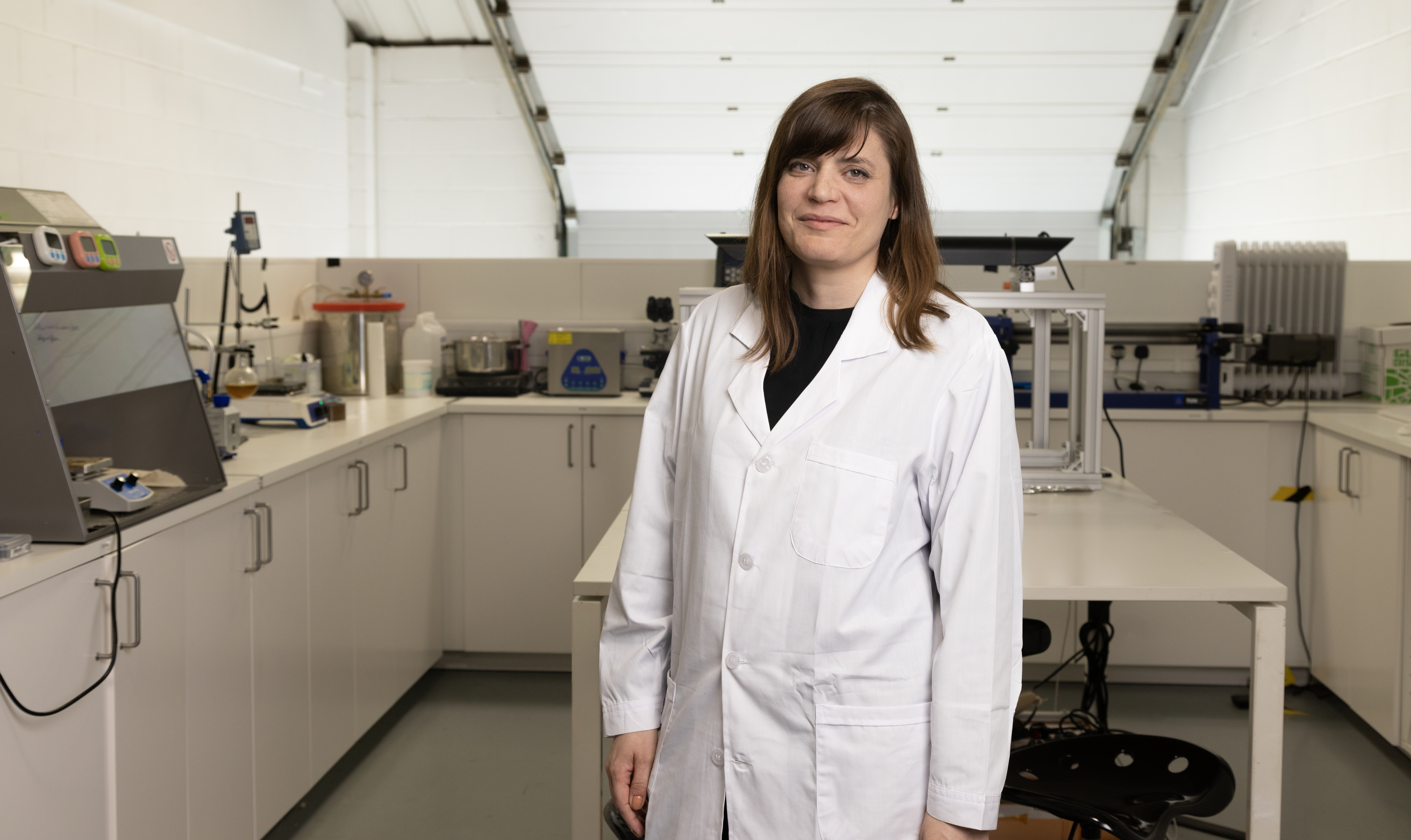Piloting a Circularity Solution in E-commerce
8 October 2020
AMSTERDAM/BERLIN – A new pilot project orchestrated by Fashion for Good, together with Zalando and circular.fashion, an innovator from the Fashion for Good Accelerator Programme, launches today to test their circularity.ID at scale; a traceability solution that increases the resale and recycling opportunities for clothing. The current linear system is the root cause of the fashion industry’s immense environmental footprint: more than 70% of garments are thrown away due to style preference rather than quality and less than 1% of garments are recycled into new clothing. Integrating circularity.ID into products enables companies to have a transparent flow of information between material suppliers, brands, consumers and recyclers, facilitating garment sorting for reuse or recycling and further driving circularity in the e-commerce sector.
“Innovation that helps to inform end-of-use decision making and facilitates sorting towards either re-commerce or recycling is a key enabler for circularity. By establishing a transparent flow of information between brands, consumers, sorting and recycling facilities, we take a step closer to achieving that goal.” – Katrin Ley, Managing Director, Fashion for Good
GATEWAY TO CIRCULARITY
The partnership between Fashion for Good, Zalando and circular.fashion in this pilot project furthers the development of a vision of a circular system and ties directly into Zalando’s recently launched do.MORE sustainability strategy, in which they are integrating circularity principles into their garments and supply chain. Effective sorting of post-consumer textiles is the gateway to circularity, having the potential to reduce our dependence on virgin materials and is a focus area of increasing importance for Fashion for Good. In order to capture the full value of post-consumer waste, sorting must sit alongside recycling technologies and other circular business models.

Currently a very manual process, sorting is prone to human error, relying on a care label, which in up to 50% of collected garments is either missing, worn-out or incorrect. Berlin-based innovator circular.fashion, is a startup that develops tools and services for circular design as well as infrastructures and sorting innovations to empower the use of fibre-to-fibre recycling. Their circularity.ID is an open data standard for product and material data available on a digital platform that goes beyond that normally found on a care label. This information is vital to informing end-of-use decision-making, ultimately optimising a garment’s lifecycle by addressing two crucial end-of-use scenarios; re-commerce and recycling. By streamlining a garment’s path to re-commerce and recycling, circularity.ID extends the lifecycle of apparel while simultaneously diverting products from landfill.
“With the mission of wider adoption of circular practices in the fashion industry and to align with initiatives and organisations striving for the same goal, it is an overwhelmingly positive step to have circularity.ID implemented in such an instrumental platform as part of their supply chain, to robustly test the advantages, limits and future opportunities for the wide scale use!” – Ina Budde, Co-Founder and CEO, circular.fashion.
ZALANDO AND CIRCULAR.FASHION
Zalando’s private label Zign, their webshop and their recently launched Pre-owned offer, provide an excellent testing ground for this technology. Consumers who purchase the garments are able to scan the circularity.ID QR code woven into the label to discover the entire history of the product through circular.fashion’s digital product site; from material components, to care instructions beneficial to the longevity of the garment and finally end-of-use opportunities. The products are designed with the intention of having a high circularity potential. All components are assessed by circular.fashion through a Circular Product Check with the aim to match them to specific recyclers in circular.fashion’s network. To this end, the circularity.ID not only supports the circularity of products, but also their traceability by detailing the garment’s entire lifecycle.
The digital product site includes directions on how to trade in the garments through Zalando’s Pre-owned offer. Garments that are traded in are sorted for resale through Zalando’s Pre-owned process. For garments that are not eligible for trade-in, because they are no longer wearable, consumers have the option to send them to circular.fashion where the next phase of their lifecycle will be determined. Integrating the circularity.ID into the products allows for a better understanding of customers’ interaction with the pilot products, and how this engagement inturn translates into actions taken by them, testing the scalability of such products and the further application of circularity principles at Zalando.
“We’re excited to offer our customers a collection designed with circularity principles in mind and testing an end-to-end solution that goes beyond circular design. With this pilot project, we will gather learnings on how customers value this additional level of product transparency and how it can help them extend the life of their garments.” – Kate Heiny, Director Sustainability at Zalando.
Other Articles

Fashion for Good Welcomes Ten New Innovators to Its 2024 Innovation Programme

5 FAQS About ‘Leather’ Alternatives

